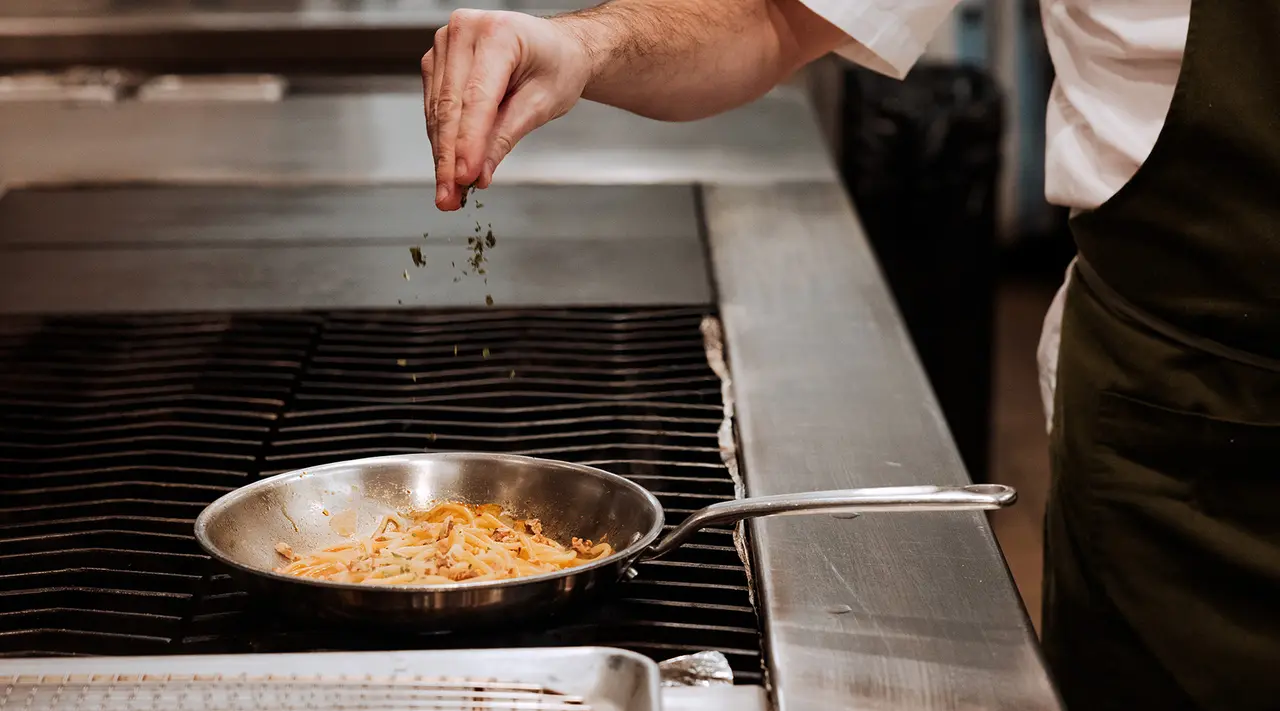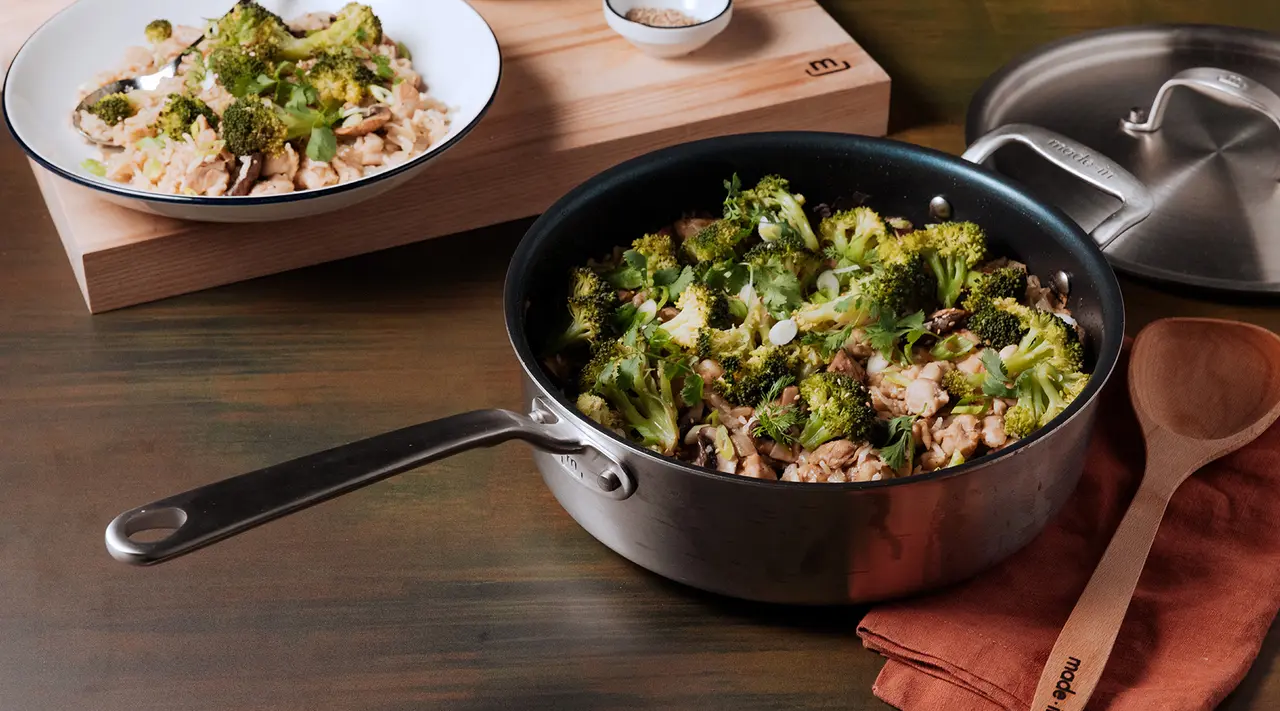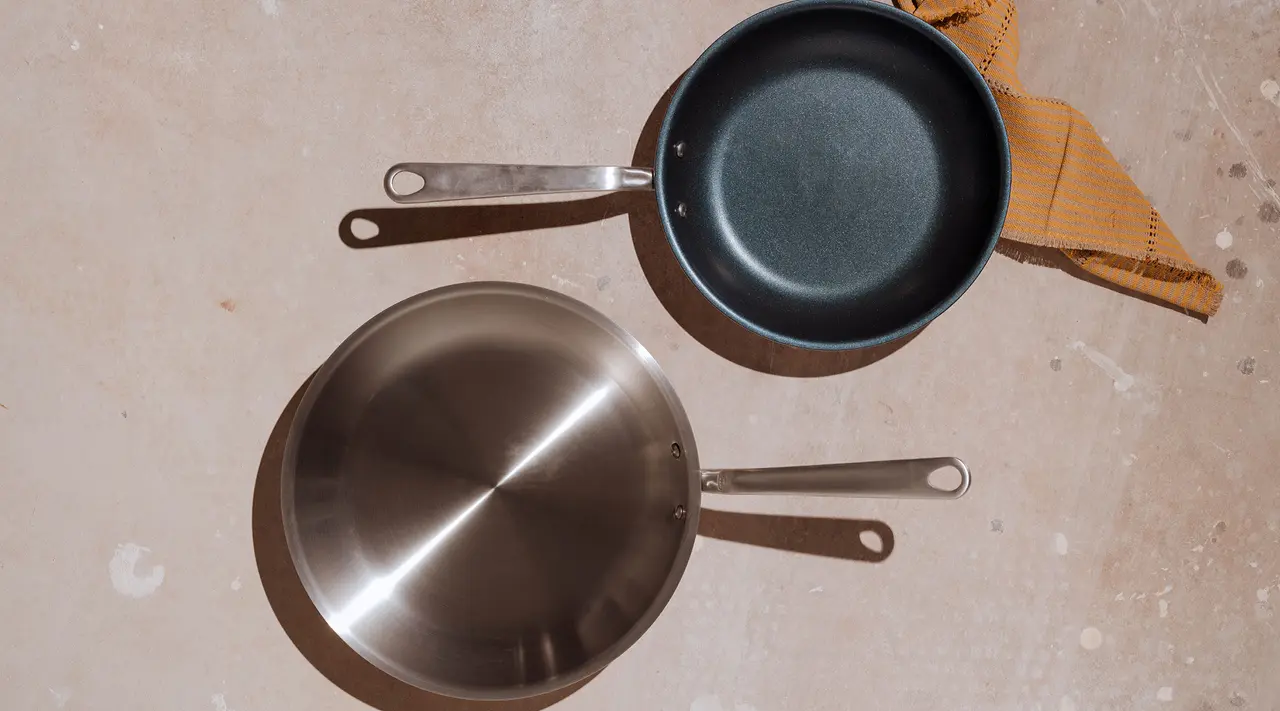The words "skillet" and "frying pan" are typically used interchangeably to describe a pan with sloped sides, a long handle, and a large, flat cooking surface—because, spoiler alert, these are just two different words for the same tool. Let's get into why.
Are Frying Pans and Skillets the Same?

Just to be extra clear: there's no difference between frying pans and skillets, except where one word is used more predominantly over the other. "Skillet" is typically the more popular term in the Southern U.S., where it expanded from referring to cast iron skillets to the entire category of pans of that shape.
Frying pans/skillets feature flat bottoms and cooking surfaces, flared sides, a shallow depth, and long handles. These features make them the perfect choice for shallow frying, flipping food, stirring, high-heat searing, or grilling meat at high temperatures.
So, Why All the Confusion?

If frying pans and skillets are the same things, then what's with all the confusion between the terminology?
Most cookware aficionados believe the confusion comes from the non-specific use of the generic words "pots and pans." In addition to frying pans, there are saucepans, sheet pans, cake pans, bundt pans, roasting pans, and more.
In a professional chef's kitchen, the word "pan" on its own usually refers to a saute or frying pan, but for the home cooks, more cookware shapes typically means more confusion and less specificity.
What About Saute Pans?

Unlike frying pans or skillets, the saute pan is usually much deeper and features straight, vertical sides, designed to hold a greater volume and prevent spills.
They have a single, long handle, like fry pans, but larger sizes also usually feature a smaller side handle to help the cook lift the added weight of more food. Saute pans also usually come with a lid designed to hold in moisture, which makes them much more useful for slow cooking with sauces.
Ready to Cook?
At the end of the day (and the beginning of your dinner recipe), your kitchen is just that: your kitchen. You can cook whatever you want, however you want. Using the right pan for your recipe, however, will make smooth work of your delicious at-home dinner plans.































